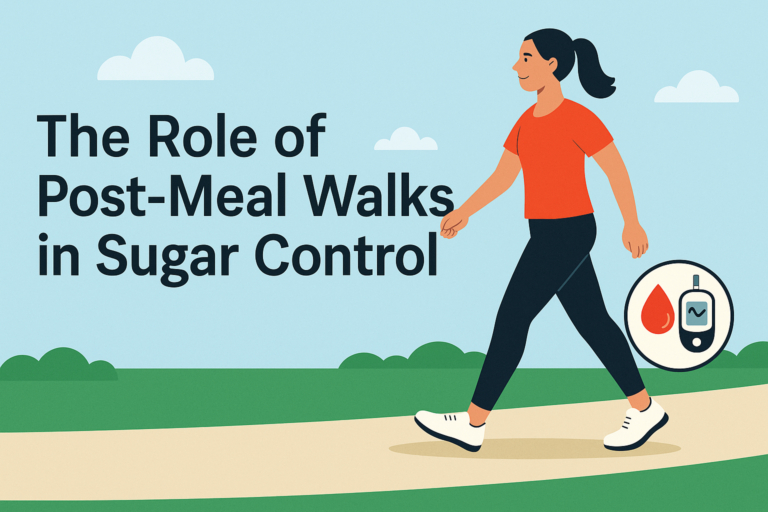
Managing blood sugar levels isn’t just about what you eat—it’s also about what you do after you eat. One of the most underrated lifestyle changes for diabetes control and insulin sensitivity is a simple habit: the post-meal walk.
Let’s explore why walking after meals plays a crucial role in blood sugar management, and how you can make it part of your daily routine.
🔬 Why Post-Meal Blood Sugar Spikes Matter
After a meal, especially one rich in carbohydrates, your blood glucose levels rise. For people with type 2 diabetes, prediabetes, or insulin resistance, this spike can be excessive, putting strain on the body’s insulin response.
Consistently high postprandial blood sugar levels contribute to:
Increased HbA1c
Fatigue and cravings
Inflammation and vascular damage
Progression of diabetes complications
🚶♀️ How a Post-Meal Walk Helps
Scientific studies have shown that light to moderate physical activity after meals—even just 10 to 15 minutes—can significantly:
Reduce the post-meal glucose spike
Improve insulin sensitivity
Lower fasting blood sugar levels
Support better HbA1c outcomes
When you walk, your muscles use glucose for energy, reducing the need for insulin to shuttle sugar into your cells. This is especially helpful for those dealing with insulin resistance.
🕒 Best Time and Duration
When: Start walking 10-20 minutes after eating
Duration: Aim for 10 to 30 minutes of walking
Intensity: Keep it light or moderate—you should be able to hold a conversation
Even a 10-minute walk after breakfast, lunch, or dinner can be enough to see measurable changes over a few weeks.
🥗 Combine with a Balanced Diet
While walking helps, combining it with a diabetes-friendly diet—rich in fiber, healthy fats, and lean proteins—is essential. A 1200–1800 kcal meal plan tailored to your needs, along with regular post-meal movement, forms a solid foundation for diabetes reversal.
✅ Real-Life Tips to Make It a Habit
Walk while making a phone call
Stroll with family after dinner
Take your dog for a walk post-lunch
Set a reminder on your phone
Remember, consistency matters more than intensity.
Post-meal walks are a powerful, drug-free way to improve blood sugar control. This small change, when done consistently, supports lower HbA1c levels, boosts energy, and reduces diabetes-related complications.
If you’re on a path to reversing type 2 diabetes or maintaining optimal blood glucose control, start walking after your meals—your body will thank you.